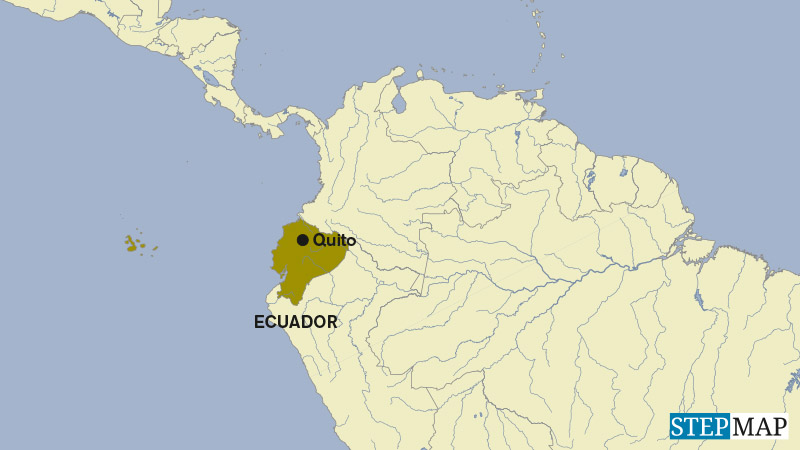Climate
Beyond aid as we know it
[ By Kate Raworth ]
Turkana, Kenya. December 2006. Philip Emanman looks at the monthly drought bulletin for his region. Fisheries: Alarm. Peri-Urban: Alarm. Pastoral, all species: Alarm. District summary: Alarm. “There used to be a major drought every 15 to 20 years,” says Emanman, who works for the Kenyan government’s Arid Lands Management Programme. “Now it’s every two to three years. Our climate is worsening.”
According to Esinyen Timu, a village elder in Oropoi district, the problem is not only the drought: “We can’t predict when and if the rains will arrive. It means we can’t make decisions on what we will do next week with our animals or what we will do next year with our lives.”
Scientific predictions about global warming are fast coming true – and many poor communities must find ways to cope with the consequences. In South Africa, rain has become less frequent and less reliable. Farmers are selling their cattle and plant faster-maturing crops. In Bangladesh, villagers are creating floating vegetable gardens to protect crops from floods. In Vietnam, people are planting mangroves along the coast to diffuse tropical-storm waves.
Many rural communities have, for centuries, coped well with variations in the climate. But the predicted stresses of human-induced climate change lie outside the realm of human experience. John Holdren, president of the American Association for the Advancement of Science, says: “We basically have three choices – mitigation, adaptation, and suffering. We’re going to do some of each. The question is what the mix is going to be. The more mitigation we do, the less adaptation will be required, and the less suffering there will be.”
Developing countries need to adapt to climate change at many levels. Communities need appropriate technologies and must diversify their livelihoods. Ministries must plan and budget around climate uncertainty. Infrastructure like hospitals, reservoirs and roads must be climate-proofed. All this will cost – as will the relief and rehabilitiation operations after crises.
There is a deep underlying injustice about the impact of climate change. Rich countries have caused the problem. For decades, they have emitted greenhouse-gases, growing wealthy in the process. Poor countries, however, are worst hit by climate change. They face ever-greater droughts, floods, hunger and disease, and don’t have the resources to cope.
Fundamental ethics
At play here is a widely accepted ethical principle, something understood from playgrounds to courtrooms around the world: if you harm others, you must stop and resolve the damage you caused. The polluting rich countries must stop harming others. They must massively reduce emissions and find low-carbon alternatives, so that global warming stays as far as possible below 2oC. And they must start helping poor countries to adapt before they suffer the full impacts of climate change.
As a necessary (and relatively easy) first step, rich countries must agree to fund their share of developing-country adaptation costs now. This must be done on top of their current aid spending.
Adaptation costs are tricky to estimate for three reasons.
– Too little adaptation work has been done so far to provide a robust cost assessment;
– the future impacts of climate change are highly uncertain; and
– the severity of future damage depends on how fast we cut pollution now.
Nonetheless, estimating adaptation costs is an important exercise. The World Bank has estimated that developing countries will need $ 10 to 40 billion a year to adapt to the worsening affects of climate change. However, the Bank focuses on the cost of climate-proofing ‘macro’ investments already planned by governments, donors and the private sector. It does not take into account vital community-level initiatives to help the most vulnerable people. It also ignores entirely new investments, such as restoring degraded ecosystems, or draining glacial lakes to prevent floods. Therefore Oxfam estimates that adaptation costs are much higher – at least $ 50 billion a year. And that figure will rise much higher if greenhouse-gas emissions are not cut fast enough.
Who should pay? Following the principles set out by the UNFCCC, the costs should be borne by those countries that have a) caused global warming and b) are capable of providing assistance. It makes sense to measure the “responsibility to pay” on the basis of national per capita emissions from 1992 to 2003 (the most recent data available). The “capability to pay”, in turn, can be assessed by each country’s level of development, using the UN’s latest human development index (HDI).
This approach reveals that 28 countries are both responsible for and capable of paying for adaptation in developing countries. The US is responsible for over 40 % of the $ 50 billion annual cost and the European Union about 35 % (of which the top five contributors are Germany, UK, Italy, France and Spain). Japan, Canada, Australia and Korea should pay 20 %, with Japan responsible for half of that.
So far, the concensus is that adaptation costs will amount to “tens of billions of dollars”. However, rich countries have so far pledged just $ 182 million – not even
0.5 % of the minimum Oxfam believes is needed overall.
Haiti, Samoa, Kiribati, and that’s it
To put these statistics into perspective, the most urgent and immediate adaptation priorities of the least-developed countries (LDCs) are likely to cost $ 1 to 2 billion per year. However, among rich and responsible countries, the mood is anything but urgent. They have so far delivered a mere $ 48 million to the international fund set up for LDCs. It’s enough for Haiti, Samoa, and Kiribati, but no more.
Making matters worse, this tiny fraction of what is needed is almost entirely being counted as aid. Only the Netherlands has explicitly stated that its climate-related finance will be additional to its aid spending. Aid flows are already hugely under-funded, and donor countries have still not met their promise of spending 0.7 % of their GDP on aid. Adaptation funding must be separate and additional to aid, as this money is owed on completely different grounds.
Meanwhile, the amount that rich countries are investing in their own climate-change adaptation far outstrips their contributions to international adaptation funds. The United Kingdom is the the biggest contributor to international adaptation funds so far, pledging $ 38 million. But it is investing $ 347 million in cooling systems for the London Underground. The Netherlands has pledged $ 18 million to international funds, but is spending at least $ 2,9 billion on new flood dykes at home, in anticipation of climate-change impacts.
It is in rich countries’ own interests to stop harming and start helping. Adaptation can help reduce future damage from climate change in poorer countries, but won’t tackle the source of the problem. Rich countries must stop polluting now, for otherwise adaptation costs will spiral in the future. The greatest imperative is to protect global stability and security. Rich countries not only face serious climate threats at home, but additionally a global crisis abroad as developing countries become increasingly affected by poverty, hunger, disease, migration and conflict over resources. It is in every country’s interest to tackle climate change now.










